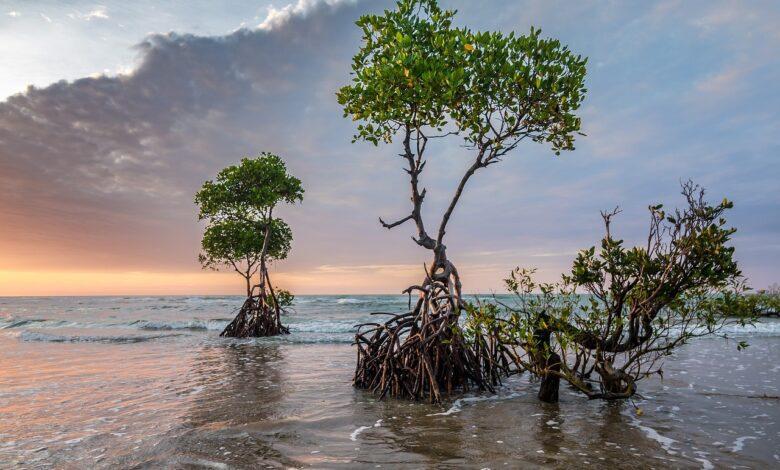Scientists predict India’s southern states to lose half of their mangroves by 2070

By 2070, Indian mangroves will reduce and shift by around 50 per cent, especially in southern India, due to the decline in suitable habitats along the east and west coasts of India.
Mangroves are salt-tolerant trees, also called halophytes, and are adapted to live in harsh coastal conditions. They contain a complex salt filtration system and a complex root system to cope with saltwater immersion and wave action.
Many mangrove forests can be recognized by their dense tangle of prop roots that make the trees appear to be standing on stilts above the water.
A research conducted by Birbal Sahni Institute of Palaeosciences (BSIP) in Lucknow has revealed that mangroves on Indian coasts that act as coastal guards, have considerably shrunk due to climate change.
Mangroves in the southwest and southeast of the country that cover four states — Karnataka, Tamil Nadu, Kerala and Andhra Pradesh — will be in the most vulnerable condition.
These coastlines will submerge and the mangroves in the area will degrade more, as compared to other areas.
The study says that certain regions like Chilika and Sundarbans along the east coast and Dwarka and Porbandar along the west coast of India are likely to see less reduction and landward shift by 2070 due to the differential response to precipitation and sea level change in different parts of the Indian coastline.
A team of five researchers led by BSIP senior scientist Jyoti Srivastava carried out the research on two mangrove species, namely Rhizophora mucronate and Avicennia officinalis which dominate India’s coastline.

The research has been published in science journal, Elsevier: Ecological Informatics.
“In our study, we took two mangrove species that are dominating the Indian coastline and then we projected and mapped the distribution of these plant species in our country’s coastline in past, present and future climate change scenarios,” said senior scientist Jyoti Srivastava who led the research.
The BSIP team first collected all the available mangrove fossils records that included a collection of pollen records of the two species from around 6,000 years ago, to know how these species survived and what its distribution was.
The scientists modelled the distribution of these plants in the past with the help of past climate data and validated it through several techniques.
Going through the model projection and past records, they found the two mangrove species had comparatively widespread distribution in the Indian coastline and were flourishing well.
Thereafter, the team compared it with present mangrove data that was collected through field surveys in mangrove areas along the Godavari, Kaveri and Mahanadi deltas.
After analysing both, present and past, data in the wake of the climate change situation, the scientific institute found that at present there is too much mangrove degradation.
`Based on it, the team projected the future mangrove distribution using several future climate change scenario data that indicated that under the highest global warming scenario by 2070, around 50 per cent of the mangroves will either vanish or shift from the coastline.
“Decline in mangroves at present in comparison to the past is due to the rise in temperature with a decline in precipitation. A decline in temperature leads to high saline conditions along the coastlines making mangroves vulnerable,” said Srivastava.
She said, “We took these two mangrove species for research as they are amongst the most dominant species that protect our coastline from eroding during natural calamities, like cyclones and tsunamis. If they are reduced, the natural infrastructure that protects our coast and villages located on the coast will be washed away.”











